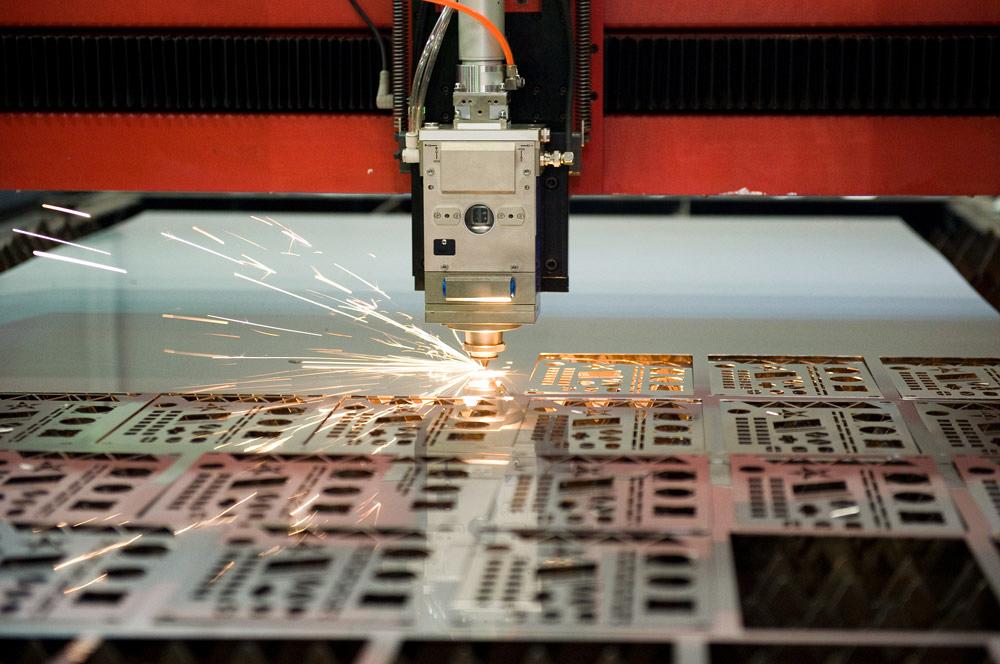Laser-cutting machines are increasingly becoming a popular choice for both commercial and residential applications. Their ability to precisely cut through materials with extreme accuracy has made them an invaluable tool in many industries.
But understanding the intricacies of laser cutting can be difficult, from choosing the right machine for your needs to operating it safely and correctly. This article will discuss how harnessing the power of lasers opens up a world of possibilities in terms of creating unique shapes and designs out of almost any material, all while providing tips on how to get started with these amazing tools.
An Overview of Laser Cutting Machines

Source: machitech.com
Laser-cutting machines are powerful pieces of technology that have revolutionized the manufacturing industry. Thanks to their automated precision and reliability, they can cut through a variety of materials with ease and accuracy.
From wood to metal, lasers offer an unparalleled level of control over the cutting process for both small-scale projects and large production runs. In this article, we will look at how laser-cutting machines work in detail.
Well, explain what different types of lasers are available, how they interact with different materials, and what safety measures need to be taken when operating them. Well also discuss the advantages that laser-cutting machines bring to industrial applications like automotive engineering or consumer goods production. Finally, will touch on some potential future advancements in laser technology which could make these machines even more efficient and effective than ever before!
Benefits of Using a Laser Cutter

Source: sites.google.com
The use of laser cutters has become increasingly popular in the modern world, as their abilities and potential are put to good use. Laser-cutting machines offer numerous advantages for those who utilize them; here are some of the most prominent benefits: 1.
Precision: One of the main advantages of using a laser cutter is that it can achieve extremely precise cuts with incredible accuracy. This precision allows you to produce intricate designs without sacrificing quality or detail.
2. Efficiency: Laser cutters also provide efficiency when it comes to production time and cost savings compared to other methods of cutting material. They require minimal setup time and work quickly so they can be used on large projects much more easily than traditional tools or machinery would allow for.
3. Versatility: The range of materials that a laser cutter can handle is impressive, ranging from paper and plastic to metals like steel, titanium, aluminum, brass, and copper alloys – making this tool an incredibly versatile asset in any industrial setting or creative environment alike! 4.
Safety: Operating a laser cutter is significantly safer than many other methods since there is no risk of sparks flying out during operation which could lead to hazardous situations in certain environments where flammable liquids may be present (such as manufacturing plants). Also because lasers operate at such high speeds, human operators have less exposure overall while working around these devices which further increases safety levels over more manual processes like sawing or drilling by hand!
Understanding the Physics Behind Lasers

Source: www.thefabricator.com
When it comes to understanding the physics behind lasers, several important concepts must be discussed. Lasers use a special type of light called coherent light, which is made up of waves that match each other in wavelength and phase.
This allows laser beams to travel great distances without dispersing or losing energy along the way. Additionally, lasers can create incredibly thin and precise cuts due to their ability to focus on very small areas with pinpoint accuracy.
The speed and precision offered by laser cutting machines make them ideal for industrial applications such as metal fabrication and automotive production. By taking advantage of these properties, users can quickly produce intricate shapes from a wide variety of materials with minimal effort.
Furthermore, many lasers are equipped with safety features such as interlocks and cooling systems that help protect operators from potential harm during operation. Understanding how the physics behind lasers work is essential for getting the most out of any laser-cutting machine or application!
Conclusion
Laser Cutting Machines are a valuable tool for many industries, allowing for the precise cutting of materials and intricate details. With the right knowledge and understanding of how these machines work, they can be leveraged to increase productivity and efficiency in any workspace.
By harnessing the power of lasers, businesses can open up new possibilities that would otherwise be impossible without them. The intricacies associated with Laser Cutting Machines require some knowledge but it is worth investing time into learning about them as this will pay off in the long run.




